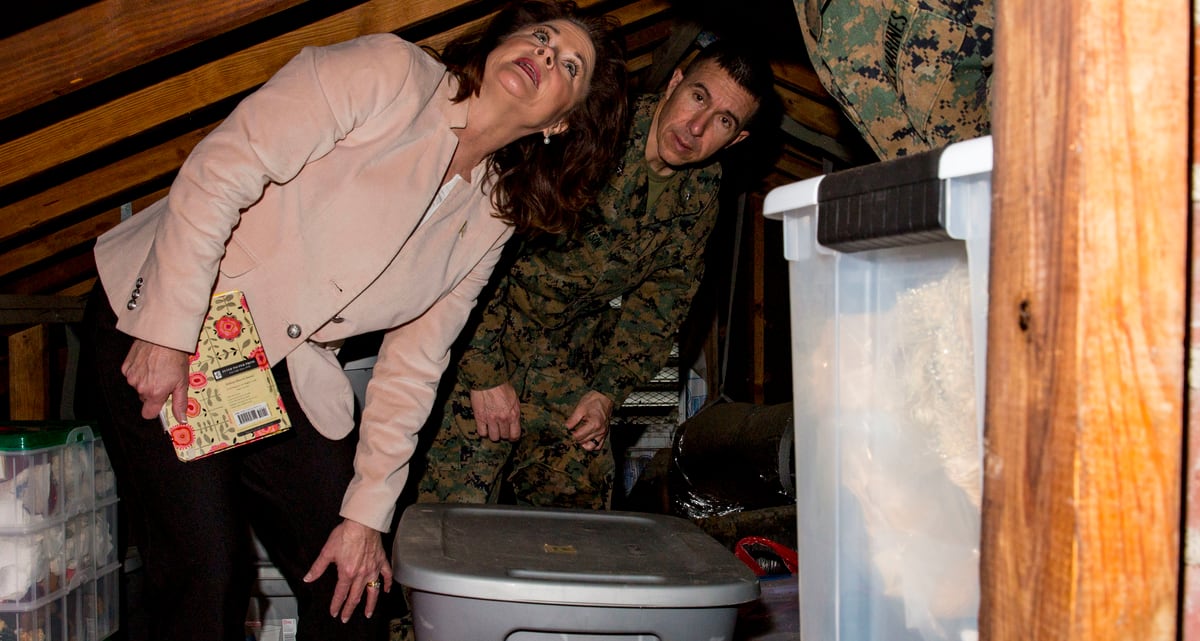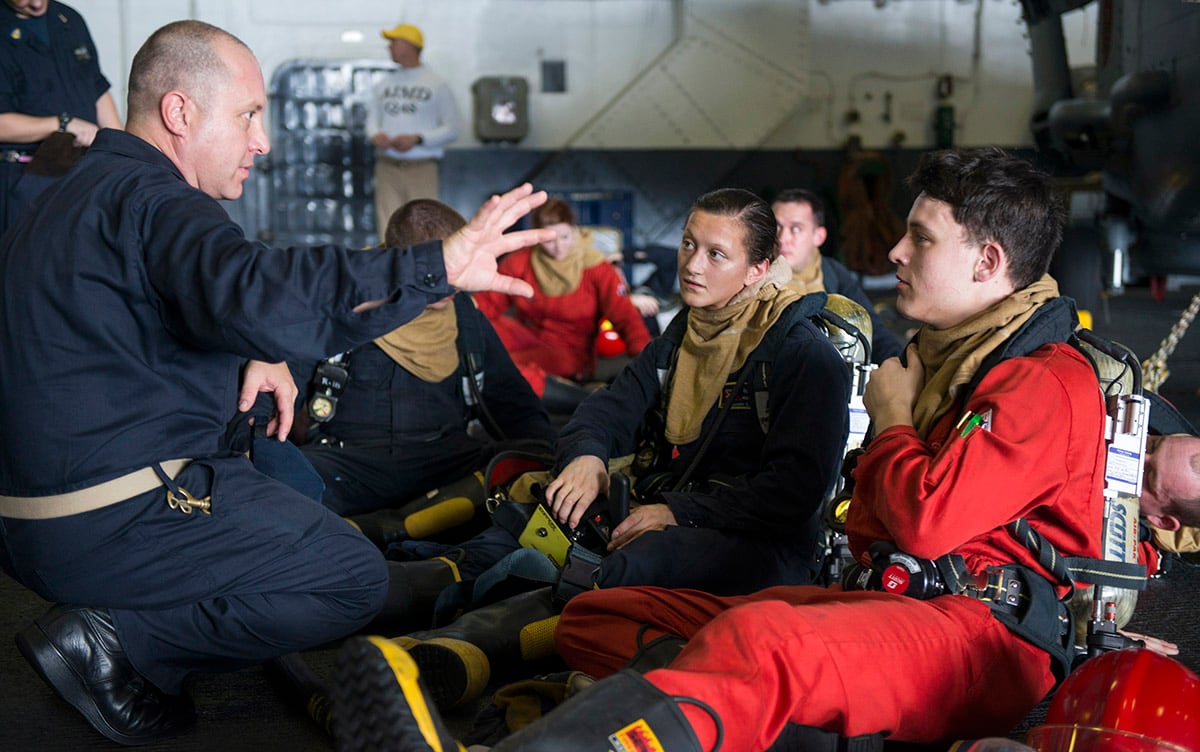It’s not so much that the Navy’s top officer and enlisted sailor are sick of hearing your complaints whenever they visit your base.
Listening to feedback from junior sailors and their officers is part of the job, usually after Chief of Naval Operations Adm. John Richardson and Master Chief Petty Officer of the Navy Russ Smith outline the newest policy changes and programs about to hit the fleet.
It’s just that they think deckplate problems usually can and should be solved by the local command, especially by division chiefs and officers.
That was the first broadside fired during a Feb. 26 virtual all hands broadcast on Facebook live from the National Museum of the U.S. Navy at the Washington Navy Yard.
“In my vision, if any of our sailors have a problem, they should be able to go to their leader, their LPO, their chief, their division officer, whoever that person is and have 100 percent confidence that leader will take this on, advocate for the sailor and solve that problem,” Adm. Richardson said.
To Richardson and Smith, leaders need to become proactive advocates for their sailors, building trust with crew members and their families.
RELATED

Their Facebook pitch echoed the weekend’s NAVADMIN message, which was designed to assess and then fix chronic mold, rat and structural problems plaguing government or public private venture housing.
In the directive, Richardson and Smith ordered commands to not wait for sailors to come to them but instead they must survey every person under their charge by April 15 and then “turn around and be that sailor’s advocate to get those conditions fixed.”
“We need to get after this as a Navy to make sure our sailors and their families are living in safe and quality housing,” Richardson said.
In the Facebook forum, CNO and Smith expanded on that call for action, prodding the Navy’s junior leaders to proactively tackle “basic, fundamental” varieties of problems, everything from housing to pay and personnel snafus.
Smith challenged the Goat Locker, not only agreeing with Richardson but telling enlisted leaders that the well-being of a sailor is a “basic chief’s issue.”
“When sailors have problems, they’re not effective in their work spaces,” Smith said.
“Getting after, finding out why our sailors are distracted — whether it’s personal issues, pay and entitlements issues, housing issues, whatever the case is — this is what chiefs exist to do. Get in there. Solve problems. Remove distractions. And provide our sailors the opportunity to practice their craft.”
But chiefs don’t do that, Smith continued, which is why he and Richardson catch the problems that percolate up to their all hands calls. It’s now something he and Richardson “run into every day,” Smith said.
RELATED

“Let me give you an example of the power of the chain of command,” Richardson said.
“MCPON and I were recently at an all hands call and we took a question from a sailor who identified to us that their most recent paycheck was 17 cents.”
They listened as the sailor outlined how he was told he’d had an error in pay and that the Navy was going to claw it all back in one lump sum, Richardson continued.
“This was just bad pay math,” Richardson said but the result was still a sailor who “was left with 17 cents,” something that’s “completely unacceptable.”
Richardson then asked if the sailor’s executive officer was in the crowd.
“The fact of the matter is the XO just went to the back of the room, made a phone call and within 30 minutes that pay issue was resolved. Again, the power of that immediate chain of command,” Richardson said. “Our sailors just sometimes need an advocate to help them get these things solved.”
Mark D. Faram is a former reporter for Navy Times. He was a senior writer covering personnel, cultural and historical issues. A nine-year active duty Navy veteran, Faram served from 1978 to 1987 as a Navy Diver and photographer.



